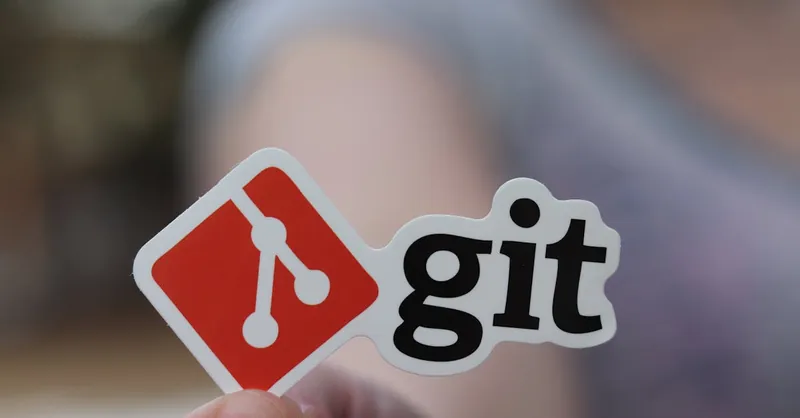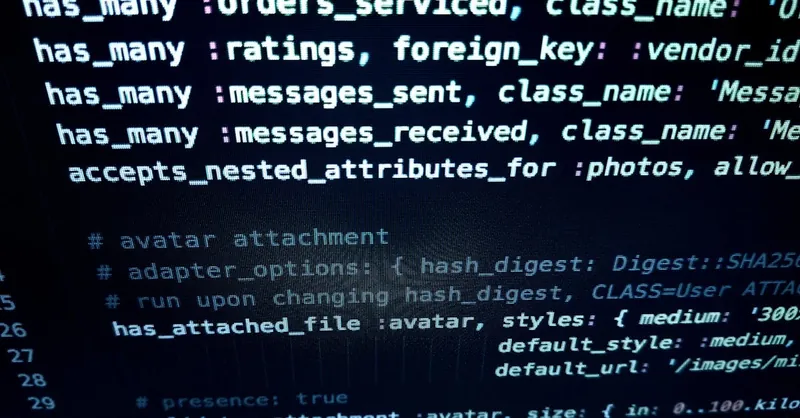How to Monetize Your Programming Skills for Passive Income
Category: Programming
Unlocking New Revenue Streams: Monetize Your Programming Skills
If you’re a programmer or developer looking to turn your coding expertise into consistent passive income, you’ve likely searched for practical ways to do so beyond traditional employment. You understand how highly competitive the tech market is and maybe you’ve tried freelancing or contract work but want something more scalable and less tied to active hours. This post is built specifically for tech-savvy individuals like you who want to creatively leverage programming skills into automated, long-term income streams.
You’ve landed here because you’re eager to explore innovative ideas and proven strategies that go beyond the typical freelance hustle—whether it’s developing niche software products, setting up coding-based affiliate sites, or monetizing open-source projects. Unlike other generic guides, this blog dives into actionable concepts mapped out in a logical flow so you can pinpoint what fits your skill set and goals best.
In the sections ahead, we’ll explore diverse monetization models, tools, marketplaces, and automation techniques that help coders build multiple income streams — all designed to minimize your active involvement and maximize returns. Stick around to uncover the best ways to transform your programming abilities into sustainable, creative passive income.
- Unlocking New Revenue Streams: Monetize Your Programming Skills
- Identifying Marketable Programming Skills
- Creating and Selling Software Products: Conceptualize, Develop, and Launch for Recurring Revenue
- Building and Monetizing Open-Source Projects: Strategies for Sponsorships, Donations, and Paid Feature Requests
- Developing Educational Content and Coding Courses: Leveraging Programming Knowledge for Scalable Passive Income
- Automation and Tool Development for Passive Income: Designing Scripts, Bots, and Trading Algorithms
- Monetizing Programming Blogs and Content Sites: Affiliate Marketing, Ads, and Sponsored Content
- Participating in Affiliate Marketing Using Coding Projects: Building Coding Resources That Drive Affiliate Commissions
- Leveraging Marketplaces and Freelance Platforms Creatively: Building Reusable Code Libraries, Templates, or Assets for Passive Income
- Developing Mobile Apps for Passive Revenue: Steps to Create Simple Yet Profitable Mobile Apps
- Tips to Scale and Diversify Your Programming Income Streams: Automate, Outsource, and Reinvest for Exponential Growth
Identifying Marketable Programming Skills
Before diving into monetization strategies, it’s crucial to pinpoint your strongest programming languages, frameworks, and niche expertise that align with current market demand and offer viable passive income opportunities. Not all programming skills have equal earning potential when it comes to passive income; focusing on the right areas increases your chances of building scalable, automated revenue streams.
Evaluate Your Core Programming Languages and Frameworks
Start by listing the coding languages and frameworks you’re most proficient in and then research their commercial demand. For example:
- JavaScript and frameworks like React or Vue: Highly sought after for web development, useful for building SaaS products, browser extensions, or component libraries that can be monetized.
- Python: Dominates in data science, automation scripts, and machine learning models, offering opportunities to create APIs or downloadable tools.
- Swift and Kotlin: Essential for iOS and Android app development, ideal if you want to create mobile apps or game assets that generate revenue over time.
- Backend technologies like Node.js, Django, or Ruby on Rails: Can be used to build subscription-based web services or micro-SaaS projects aimed at niche markets.
Identify Niche Expertise and Emerging Technologies
Specializing in a particular domain can drastically improve your passive income potential. Some examples include:
- Blockchain and smart contracts: Develop decentralized apps (dApps) or create educational content and templates.
- DevOps automation and cloud platforms (AWS, Azure, GCP): Build infrastructure automation tools or monitoring solutions for recurring income through licensing.
- IoT and embedded systems programming: Monetize custom firmware or open-source hardware projects.
Match Skills to Passive Income Models
Once you’ve identified your in-demand skills, evaluate which passive income channels fit best, such as:
- Selling digital products (eBooks, coding templates, plugins)
- Subscription or licensing models for SaaS or developer tools
- Affiliate marketing for tech products tailored to your expertise
- Monetizing open-source projects via sponsorships or donations
By focusing on commercially relevant, high-demand skills combined with niche specialization, you set a strong foundation to build passive income streams that generate revenue with minimal ongoing effort. This targeted approach ensures your programming talents translate into sustainable financial gains.
Image courtesy of Christina Morillo
Creating and Selling Software Products: Conceptualize, Develop, and Launch for Recurring Revenue
Transforming your programming skills into standalone software products is one of the most effective ways to generate sustained passive income. Whether it’s a desktop app, a mobile tool, a plugin, or a full-fledged SaaS (Software as a Service) platform, the key lies in identifying real-world problems, creating targeted solutions, and packaging them for scalable distribution. This approach enables you to monetize your coding expertise by delivering ongoing value to users who pay repeatedly—via subscriptions, licenses, or usage fees.
Conceptualizing Your Software Product
Start by researching pain points within your chosen niche or industry. Successful products usually:
- Solve specific, recurring challenges better or more efficiently than existing options.
- Cater to a clearly defined audience, such as freelancers, small businesses, educators, or developers.
- Offer unique features or integrations that set them apart in the marketplace.
Validate your idea through surveys, forums, and minimal viable product (MVP) launches to ensure demand and willingness to pay.
Development Best Practices for Longevity and Scalability
When building your software, prioritize:
- Modular architecture and clean code for easy maintenance and feature updates.
- Automation of onboarding, billing, and customer support, leveraging APIs and third-party services to reduce daily manual tasks.
- Cross-platform compatibility if applicable—think web, desktop, and mobile responsiveness depending on user needs.
- Implementing analytics and user feedback loops to adapt and optimize your offering continuously.
Launching for Maximum Impact and Recurring Income
A strategic launch plan includes:
- Creating clear value propositions focused on subscription benefits, time savings, and ROI to justify recurring payments.
- Leveraging marketplaces (e.g., App Stores, WordPress Plugin Repository, Product Hunt) and direct sales funnels.
- Offering free trials or freemium tiers to build trust and initial user base.
- Using content marketing, SEO, and targeted advertising to attract organic traffic and qualified leads.
By mastering the process to conceptualize, efficiently develop, and smartly launch your software products, you tap into sustainable income powered by recurring revenue models. This empowers you to grow your programming income passively while solving real problems and continuously expanding your product’s market reach.

Image courtesy of Christina Morillo
Building and Monetizing Open-Source Projects: Strategies for Sponsorships, Donations, and Paid Feature Requests
Contributing to or creating open-source projects is not only a powerful way to showcase your programming skills and build a strong developer reputation but also an increasingly popular avenue to generate passive income. By leveraging platforms like GitHub and GitLab, programmers can attract a broad user base and convert goodwill into sustainable revenue streams through sponsorships, donations, and paid feature requests.
Gain Visibility and Build Community Trust
The foundation for monetizing open-source is building a project that solves a real problem or adds significant value to an existing ecosystem. Focus on:
- Clear project documentation and usability: Make installation, usage, and contribution easy to attract more users and contributors.
- Consistent code quality and responsiveness: Actively maintain your repository by fixing bugs, reviewing pull requests, and engaging with the community to build trust and loyalty.
- Promoting your project on social media, developer forums, and newsletters to broaden its reach and spotlight your expertise.
Unlock Revenue Through Sponsorships and Donations
Once your project gains traction, monetize its popularity by:
- Joining GitHub Sponsors, Open Collective, or Patreon: These platforms enable users and companies to support your work financially on a recurring basis.
- Adding “Sponsor” buttons and prominent donation links (e.g., PayPal, Ko-fi) directly on your project’s README and website.
- Offering exclusive benefits for sponsors such as early access to features, priority support, or branded merchandise.
Monetize Paid Feature Requests and Customization
Another lucrative method involves offering premium, paid extensions or custom development services linked to your open-source project. This can include:
- Feature prioritization via paid feature requests: Allow users to fund the development of specific functionalities they need most.
- Custom plugins or modules: Build and sell add-ons that enhance the core project’s capabilities.
- Providing consulting or integration services for companies adopting your open-source solution.
By strategically combining community building, transparent sponsorship models, and value-driven paid enhancements, programmers can transform their open-source contributions from passion projects into meaningful, passive income streams. This approach not only rewards your coding efforts but also reinforces your influence and credibility in the developer community—opening doors for further monetization opportunities.

Image courtesy of RealToughCandy.com
Developing Educational Content and Coding Courses: Leveraging Programming Knowledge for Scalable Passive Income
Another highly effective way to monetize your programming skills is by creating educational content, such as video tutorials, comprehensive coding courses, and eBooks that address specific learning needs within the developer community. Platforms like Udemy, Teachable, Coursera, and Skillshare enable you to reach a global audience eager to learn practical programming skills, making educational products a reliable source of recurring passive income.
Why Educational Content Is a Lucrative Passive Income Stream
Programming education is in constant demand due to the rapid evolution of technologies and the ongoing digital transformation across industries. By packaging your expert knowledge into structured courses or engaging tutorials, you provide learners with actionable skills and problem-solving techniques that employers and hobbyists alike value highly. Additionally, digital products such as eBooks or coding guides require minimal upkeep once created, allowing you to establish a passive income stream with relatively low ongoing effort.
Tips for Creating High-Quality Coding Courses and Tutorials
- Choose a specific, in-demand programming topic or niche — for example, mastering React hooks, building scalable APIs with Node.js, or leveraging machine learning libraries in Python.
- Develop a clear curriculum that balances theory and hands-on projects to enhance learner engagement and retention.
- Invest in quality production — clear audio, screen recordings, and concise explanations boost course credibility and completion rates.
- Incorporate quizzes, coding challenges, and downloadable resources to provide learners with practical practice and supplemental material.
- Leverage SEO-optimized course titles, descriptions, and keywords to improve course discoverability on marketplaces and search engines.
Optimizing Sales and Scaling Your Educational Products
- List your courses on multiple high-traffic platforms like Udemy and Teachable to tap into diverse learner bases.
- Use email marketing and content marketing strategies such as blogging or YouTube tutorials to funnel prospective students.
- Offer tiered pricing models, bundle courses, or provide exclusive membership perks for recurring revenue.
- Continuously update and expand course content to maintain relevance and encourage repeat sales.
By transforming your programming expertise into educational products, you harness the evergreen demand for developer knowledge and build scalable, automated income streams that grow as your reputation and content catalog expand. This method not only enhances your authority in the tech space but also diversifies your passive income beyond software sales and open-source projects.

Image courtesy of cottonbro studio
Automation and Tool Development for Passive Income: Designing Scripts, Bots, and Trading Algorithms
Harnessing your programming skills to create automation tools, scripts, and intelligent bots represents a powerful way to build reliable passive income streams. Automation not only saves time and effort but also opens opportunities to monetize repetitive tasks, data processing, or transaction execution on autopilot. From automating social media marketing to algorithmic trading, your coding expertise can bring scalable, hands-off revenue if designed strategically.
Key Areas to Explore in Automation and Tool Development
-
Task Automation Scripts
Develop custom scripts that automate frequent tasks for businesses or individuals—such as data scraping, report generation, or email campaign management—and offer these as downloadable products or subscription services. -
Bots for Social Media and E-commerce
Build chatbots or workflow bots that enhance customer interaction, automate order handling, or moderate communities. These bots can be sold as standalone software or offered via SaaS licensing for recurring revenue. -
Algorithmic Trading Systems
Use your coding skills to design algorithmic trading bots that operate on stock, crypto, or forex markets. These bots can run autonomously to execute trades based on predetermined strategies, potentially generating passive profits with minimal oversight.
Best Practices to Maximize Passive Income from Automation Tools
- Focus on reliability and security: Automated systems involve sensitive data or financial transactions, so robustness and trustworthiness directly impact user retention and referrals.
- Implement easy configuration and monitoring: Allow users to customize automation parameters and offer dashboards or notifications to track performance effortlessly.
- Leverage subscription models: Regular updates, support, and feature expansions can justify monthly or yearly fees, increasing predictable income.
- Package with documentation and tutorials: Clear guides reduce support load and enhance user satisfaction, paving the way for positive reviews and wider adoption.
By specializing in automation and tool development, programmers can capitalize on the increasing demand for efficiency-driven solutions and create durable passive income streams that work for them around the clock. This approach aligns perfectly with modern businesses’ appetite for automating repetitive processes, making your expertise highly valuable in the passive income ecosystem.

Image courtesy of Digital Buggu
Monetizing Programming Blogs and Content Sites: Affiliate Marketing, Ads, and Sponsored Content
Creating a programming-focused blog or content site is an excellent way to leverage your coding expertise into steady passive income while building your personal brand as a tech authority. By consistently publishing valuable, niche-specific content—such as tutorials, code reviews, tool comparisons, or industry insights—you attract a targeted audience of developers, learners, and tech enthusiasts. Once your site gains significant traffic and engagement, monetization becomes highly scalable through affiliate marketing, display advertising, and sponsored content tailored to your programming niche.
Affiliate Marketing for Programming Blogs
Affiliate marketing is one of the most effective monetization strategies for programming blogs. You partner with relevant tech companies, software vendors, and educational platforms to promote their products or services, earning commissions on referred sales. Popular affiliate programs you can leverage include:
- Cloud providers (AWS, Azure, DigitalOcean) — Referring new users can earn substantial recurring payouts.
- Coding course platforms (Udemy, Pluralsight, Coursera) — Promote in-demand programming courses relevant to your blog content.
- Developer tools and software licenses (JetBrains, GitHub Copilot, code editors, APIs) — Developers often seek recommendations on tools, positioning you as a trusted referrer.
- Hardware and gadgets (laptops, peripherals, IoT devices) — Relevant if your niche covers embedded systems or maker projects.
To maximize affiliate income: - Integrate affiliate links contextually within high-value content like tutorials, product reviews, and comparison posts. - Create resource pages compiling recommended tools and software that earn commissions passively over time. - Use tracking analytics to optimize link placement and focus on content that drives the highest conversions.
Earning Through Ads and Sponsored Content
Monetizing your blog with advertising networks such as Google AdSense, Mediavine, or AdThrive allows you to generate passive income based on traffic volume and engagement. To boost ad revenue: - Focus on creating SEO-optimized content targeting long-tail keywords within your programming niche to attract organic, high-intent visitors. - Experiment with ad placements and formats that balance user experience with revenue generation.
Additionally, as your blog grows in authority, you can attract sponsored content opportunities from tech companies and startups eager to reach your specialized audience. Sponsored posts, product reviews, or branded tutorials not only increase income but can expand your network within the programming community.
Building Trust and Engagement for Sustainable Income
Crucially, successful monetization through blogs hinges on maintaining authenticity and trustworthiness with your audience: - Always disclose affiliate partnerships and sponsored content clearly to comply with regulations and foster transparency. - Provide honest, in-depth content that adds real value rather than purely promotional material. - Engage with readers through comments, newsletters, or social media to build a loyal community that returns regularly.
By strategically combining affiliate marketing, targeted ads, and sponsored collaborations, your programming blog or content site can evolve into a powerful passive income channel—one that grows in revenue proportionally with your expertise, content quality, and audience size.

Image courtesy of Pixabay
Participating in Affiliate Marketing Using Coding Projects: Building Coding Resources That Drive Affiliate Commissions
Affiliate marketing offers a unique way for programmers to monetize their coding skills indirectly by creating valuable coding resources or developer tools that incorporate affiliate links within their ecosystem. Unlike straightforward product reviews or blogs, this approach leverages your technical expertise to build practical projects—such as code libraries, CLI tools, development templates, or educational repositories—that naturally recommend third-party products or services. When users engage with these resources and make purchases through your affiliate links, you earn commissions consistently without directly selling any software yourself.
How Coding Projects Can Fuel Affiliate Commissions
By embedding affiliate offers into projects where the audience organically seeks recommendations, you create high-converting passive income channels. For instance:
- Open-source starter kits or boilerplates that include setup instructions linking to cloud providers, hosting platforms, or developer tools with affiliate tracking.
- CLI utilities or desktop apps that streamline workflows but suggest premium services or API subscriptions available through affiliate programs.
- Interactive coding tutorials or playgrounds that integrate third-party educational platforms or software trials, guiding learners via affiliate referrals.
- Curated resource lists or project templates hosted on GitHub or personal websites that direct developers to affiliate offers for themes, SDKs, or SaaS products.
Best Practices to Maximize Affiliate Revenue Through Coding Projects
- Provide genuine value: Your projects should solve real problems or significantly enhance productivity, ensuring that users trust your recommendations embedded within the tools.
- Use contextual and relevant affiliate links: Avoid excessive or unrelated promotions; focus on products and services your user base will likely adopt.
- Maintain transparency: Clearly disclose affiliate partnerships within documentation or project README files to comply with legal standards and build credibility.
- Promote through developer communities and social channels: Active sharing in forums, newsletters, and social media increases project visibility and drives targeted traffic to your affiliate-enabled resources.
Leveraging your programming projects as vehicles to recommend and link to complementary products harnesses a scalable and relatively passive affiliate income model. This method combines your coding proficiency with digital marketing savvy to generate recurring affiliate commissions that grow alongside the adoption of your resources and tools.

Image courtesy of luis gomes
Leveraging Marketplaces and Freelance Platforms Creatively: Building Reusable Code Libraries, Templates, or Assets for Passive Income
One of the smartest ways to monetize your programming skills with long-term, minimal active effort is by creating reusable code libraries, templates, or digital assets that you can sell repeatedly across multiple marketplaces and freelance platforms. Unlike one-off freelance projects, these digital products require upfront development time but offer the potential for continuous income as the same resource gets purchased by numerous buyers over time.
Why Focus on Reusable Code and Templates?
Reusable components such as UI kits, API wrappers, starter templates, plugins, or microservices appeal to developers and businesses aiming to accelerate their projects without reinventing the wheel. By addressing common pain points or standardizing complex functionalities, you provide ready-made solutions that save time and reduce development costs for your customers. This scalability transforms your initial coding investment into a steady, passive revenue stream with minimal maintenance.
Popular Marketplaces and Channels to Sell Your Digital Programming Assets
- Code marketplaces like CodeCanyon, GitHub Marketplace, or npm offer platforms designed to showcase and distribute code libraries, snippets, and plugins globally.
- Template providers such as ThemeForest or TemplateMonster specialize in front-end templates, website themes, and UI components favored by developers and designers.
- Freelance platforms with product shops like Fiverr or Gumroad allow you to bundle and sell custom scripts, boilerplates, or automation tools either as one-time purchases or with licensing options.
- Specialized app stores or extension marketplaces (e.g., Shopify App Store, WordPress Plugin Repository) help reach niche audiences looking for extensions tailored to their platforms.
Strategies for Maximizing Passive Income From Reusable Programming Assets
- Focus on high-demand, evergreen niches: Choose topics like responsive UI components, authentication modules, payment integrations, or analytics dashboards that remain relevant long-term.
- Ensure excellent documentation and ease of use: Comprehensive guides and sample projects reduce support requests and increase customer satisfaction and repeat purchases.
- Offer tiered licensing models: Provide single-use licenses for hobbyists and extended licenses for businesses to maximize market reach and revenue.
- Bundle related products: Package multiple templates or plugins together to increase perceived value and average order size.
- Leverage automation tools for delivery and updates: Set up subscription or membership models for ongoing updates, encouraging recurring income beyond the initial sale.
By creatively leveraging online marketplaces and freelance platforms to distribute reusable coding assets, you unlock scalable avenues for passive income that capitalize on your programming expertise while requiring minimal ongoing effort. This approach complements active freelancing and software development work by creating long-lasting digital products that generate consistent earnings through automated sales channels.

Image courtesy of Lukas
Developing Mobile Apps for Passive Revenue: Steps to Create Simple Yet Profitable Mobile Apps
Mobile app development remains one of the most accessible and scalable ways for programmers to generate passive income. By creating simple yet engaging apps that solve specific problems or provide entertainment, developers can tap into billions of smartphone users worldwide. The key to success lies in selecting the right monetization strategies—such as in-app advertisements, in-app purchases, or subscription models—and building apps that require minimal ongoing maintenance while delivering consistent value.
Key Steps to Develop Profitable Mobile Apps
-
Identify a Niche or Problem to Solve
Research trending app categories where demand is high but competition is moderate. Popular niches include productivity boosters, habit trackers, educational tools, fitness apps, and casual games. Narrowing your focus to a distinct target audience improves your app’s marketability and user retention. -
Design a Simple and Intuitive User Experience
Prioritize clean UI/UX design with streamlined navigation and responsive performance. Simple apps with clear value propositions tend to attract and retain users better, increasing the potential for passive revenue streams. -
Choose the Appropriate Monetization Model
- In-App Ads: Integrate ad networks like Google AdMob or Facebook Audience Network to earn revenue based on impressions or clicks, ideal for free apps with large user bases.
- In-App Purchases: Offer premium features, consumables, or virtual goods to users who want enhanced experiences, generating incremental revenue.
-
Subscriptions: Provide ongoing value such as advanced functionality, exclusive content, or cloud syncing through monthly or yearly fees for steady, predictable income.
-
Leverage Cross-Platform Development Tools
Use frameworks like Flutter, React Native, or Xamarin to build apps for both iOS and Android simultaneously. This approach maximizes your reach and potential earnings without doubling development effort. -
Optimize for Discoverability and User Acquisition
Implement App Store Optimization (ASO) by using targeted keywords, engaging descriptions, and appealing visuals to improve your app’s ranking. Combine this with social media marketing, influencer partnerships, and content marketing to drive organic installs. -
Automate Analytics and Updates
Integrate analytics tools to monitor user behavior and engagement, enabling data-driven improvements. Automate app updates and bug fixes where possible to minimize ongoing workload while enhancing user satisfaction.
By following these steps, you can create mobile apps that not only attract users but also monetize effectively through passive channels. Crafting lightweight, focused applications with scalable revenue models unlocks a steady stream of income that capitalizes on the ever-growing mobile market—allowing your programming skills to pay dividends long after the initial launch.

Image courtesy of Sanket Mishra
Tips to Scale and Diversify Your Programming Income Streams: Automate, Outsource, and Reinvest for Exponential Growth
To truly maximize and multiply your passive income streams from programming, it’s essential to adopt strategies that go beyond creating a single product or service. Scaling and diversifying your revenue channels not only boosts earnings but also mitigates risks associated with market fluctuations. By systematically automating repetitive tasks, outsourcing non-core activities, and reinvesting profits smartly, you can unlock exponential growth and build a resilient portfolio of programming-based passive income.
Automate to Free Up Time and Increase Efficiency
Automation is the cornerstone of passive income scalability. Implement these automation strategies to reduce your active involvement while maintaining or increasing output quality:
- Automate marketing and customer acquisition: Use email marketing funnels, chatbots, and social media schedulers to nurture leads and engage users without manual effort.
- Streamline sales and delivery processes: Integrate payment gateways, license key management, and automated product delivery systems to handle transactions seamlessly.
- Set up monitoring and support automation: Employ tools like bug trackers, automated ticketing systems, and AI-powered chat support to handle customer issues efficiently.
- Leverage analytics and reporting automation: Regularly monitor performance metrics using data dashboards and automated reporting so you can make informed decisions swiftly.
Automation tools like Zapier, Integromat (Make), GitHub Actions, and CI/CD pipelines can be game changers, enabling multiple income streams—whether through SaaS products, content sales, or affiliate marketing—to operate smoothly and profitably with minimal manual oversight.
Outsource to Expand Capacity and Focus on High-Value Tasks
Scaling income beyond your personal bandwidth requires smart delegation. Outsourcing allows you to:
- Delegate routine programming, QA testing, and content creation to freelancers or agencies, accelerating product development and marketing efforts.
- Hire virtual assistants or community managers to maintain user engagement and manage customer relations.
- Collaborate with designers, video editors, and SEO specialists to enhance your product presentation and reach a broader audience.
Platforms such as Upwork, Fiverr, and Toptal offer access to skilled professionals who can handle specific parts of your projects, enabling you to focus on innovating new programming products, refining automation workflows, and strategic reinvestment.
Reinvest Earnings Strategically to Build a Diverse Portfolio
To multiply your passive income sources, reinvesting profits into complementary income streams is crucial. Consider:
- Developing new software tools or educational content that solves adjacent problems in your niche.
- Expanding your affiliate marketing footprint by creating additional coding resources and blog content focused on high-converting offers.
- Investing in advertising campaigns to scale the reach of your best-performing products and courses.
- Upgrading infrastructure and automation systems to handle more users or customers without sacrificing quality.
By continuously reinvesting profits into creating diverse, scalable, and automated assets, you hedge against market shifts and deepen your passive income ecosystem. This iterative growth mindset helps transform one-off successes into an enduring, multi-channel revenue powerhouse fueled by your programming expertise.
Embracing these best practices—automation, outsourcing, and strategic reinvestment—empowers you to scale sustainably and broaden your passive income horizons. With disciplined execution, your programming skills can generate multiple, robust streams of income that grow independently and exponentially over time.

Image courtesy of Anna Nekrashevich
